Abstract
In the Ayurvedic system of medicine, the roots and rhizomes of an indigenous Indian plant Acorus calamus are used together with the roots of Rauwolfia serpentina for treating many mental ailments. The influence of asarone and β-asarone (the trans and cis forms of 2,4,5-trimethoxy-1-propenyl benzene), two active principles of Acorus calamus, when given alone and together with either reserpine or chlorpromazine, has been studied on the conditioned avoidance response of trained rats, on the fighting behaviour of paired mice subjected to mild foot shock and on electro-convulsions. Except for electro-convulsions, asarone in small doses potentiates the effects of reserpine and of chlorpromazine; β-asarone has no such effect. Estimation of the 5-hydroxytryptamine content of rat brain showed that neither acorus oil nor its active principles increase the concentration of 5-hydroxytryptamine; nor do these compounds cause an additional decrease in the 5-hydroxytryptamine content of the brains of animals treated with reserpine. It is concluded that the potentiating effect of these principles is unrelated to 5-hydroxytryptamine concentration. In experiments using electro-convulsions, asarone increased the percentage mortality of animals treated with chlorpromazine but not of those treated with reserpine.
Full text
PDF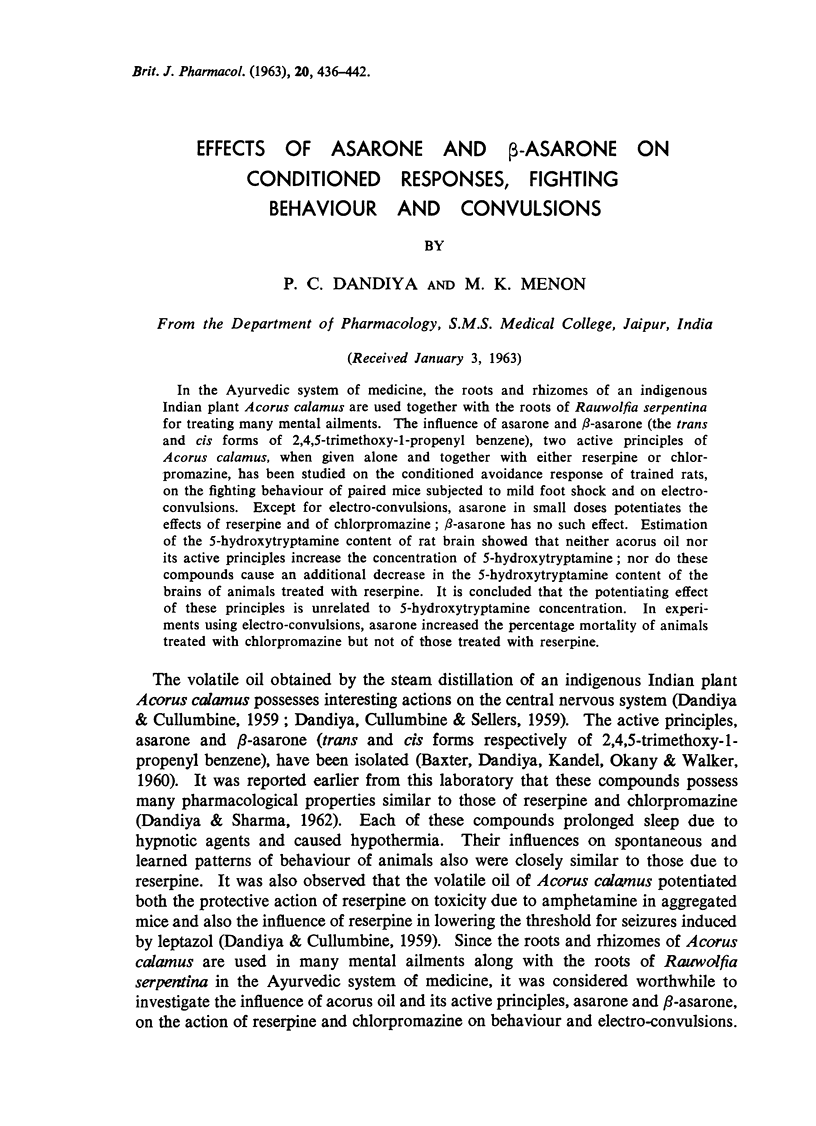
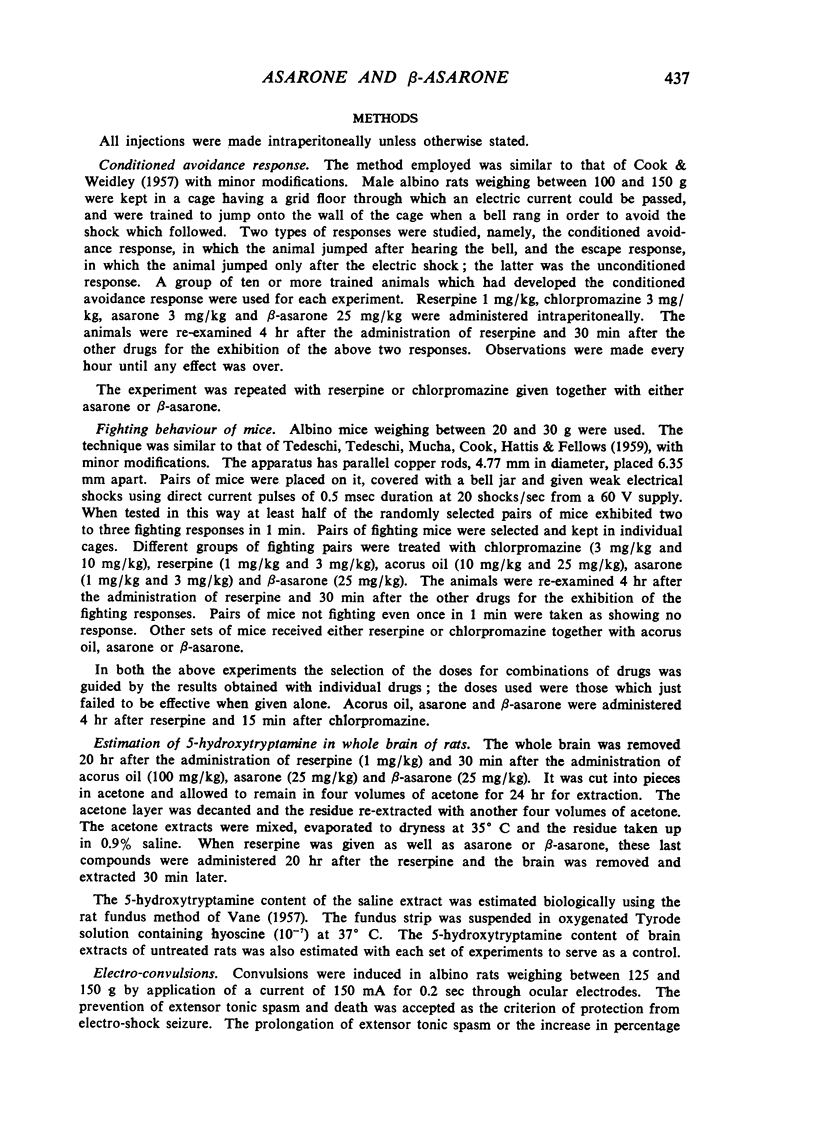
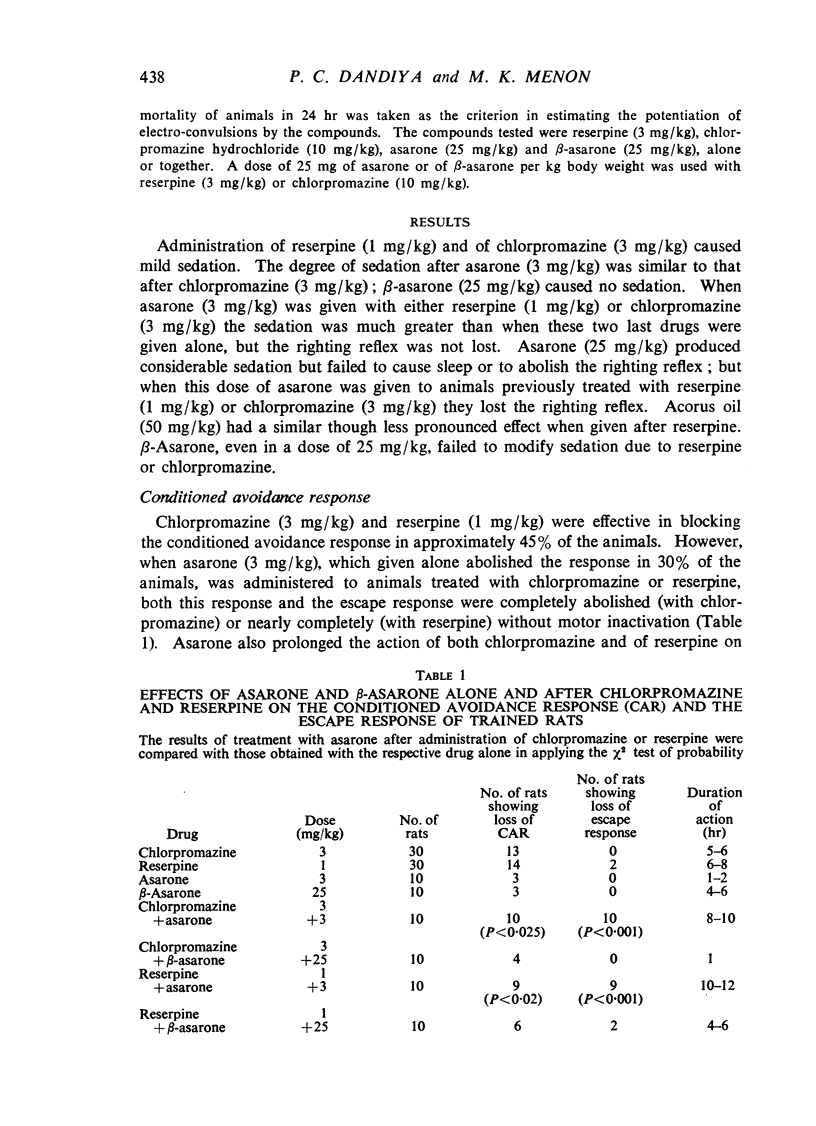
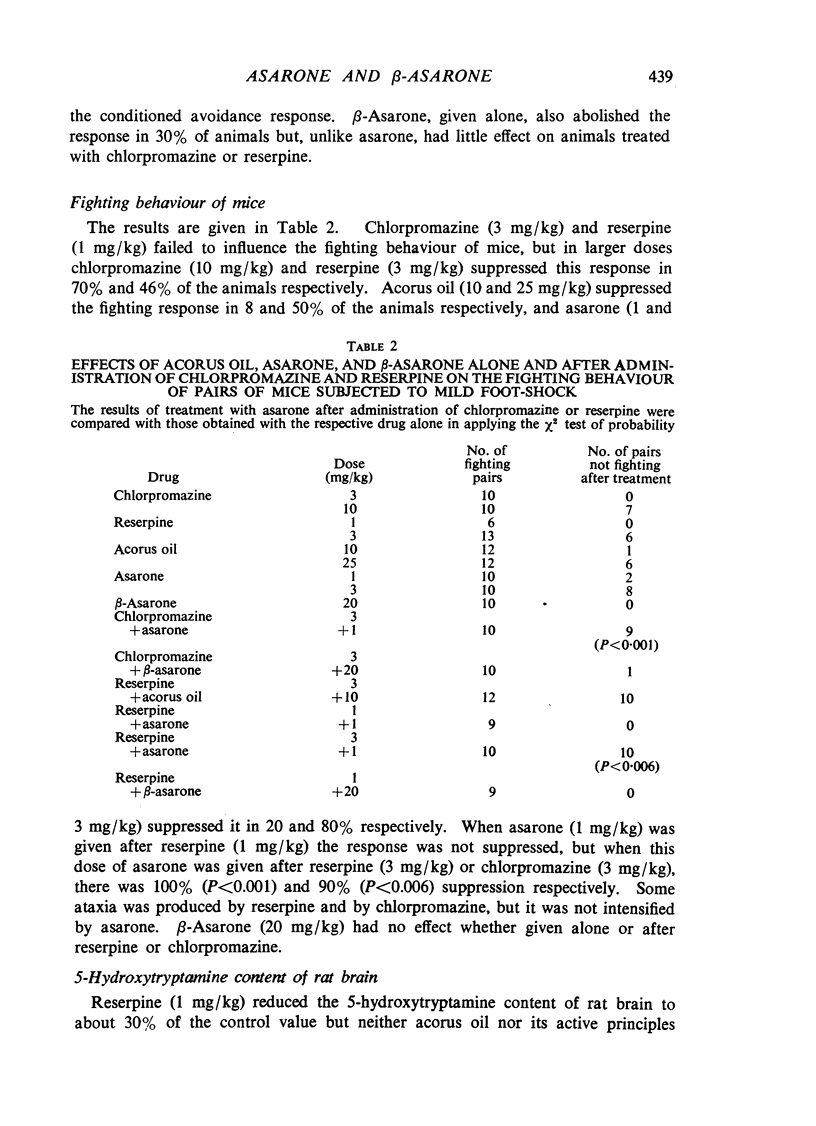
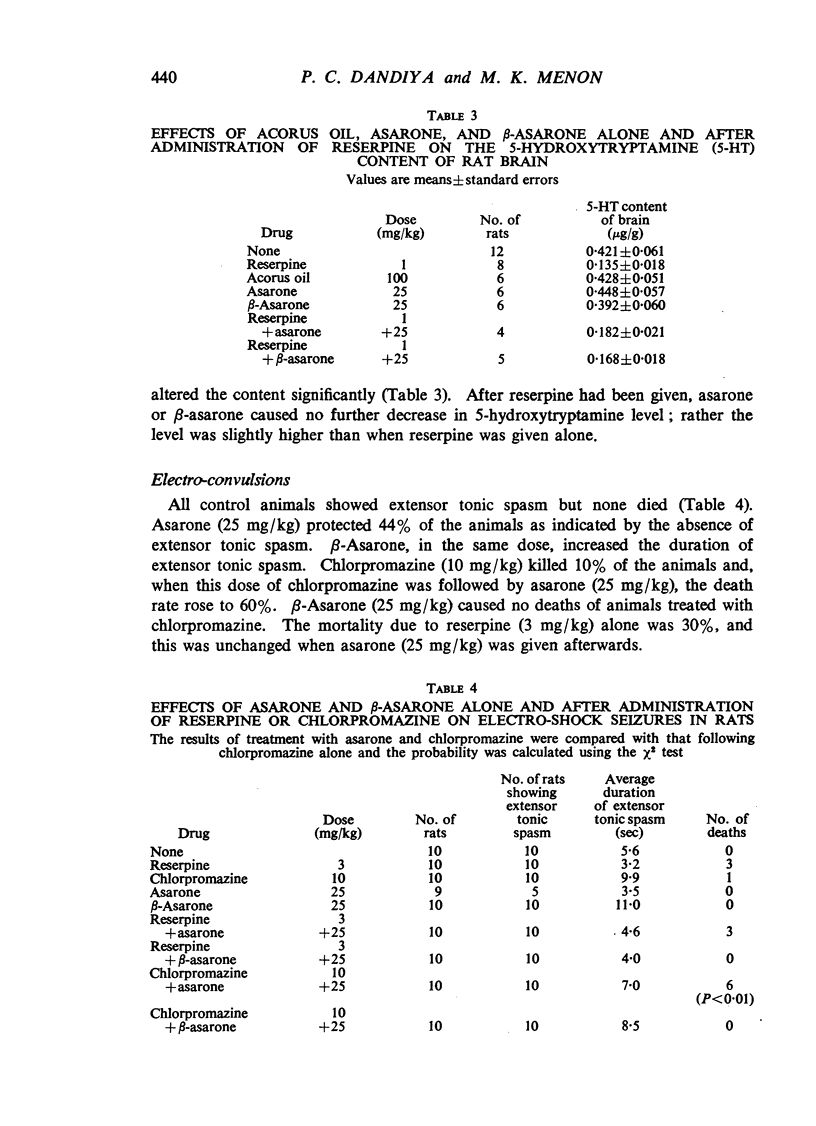


Selected References
These references are in PubMed. This may not be the complete list of references from this article.
- COOK L., WEIDLEY E. Behavioral effects of some psychopharmacological agents. Ann N Y Acad Sci. 1957 Mar 14;66(3):740–752. doi: 10.1111/j.1749-6632.1957.tb40763.x. [DOI] [PubMed] [Google Scholar]
- COURVOISIER S., FOURNEL J., DUCROT R., KOLSKY M., KOETSCHET P. Propriétés pharmacodynamiques du chlorhydrate de chloro-3-(diméthylamino-3'-propyl)-10-phénothiazine (4,560 R.P.); étude expérimentale d'un nouveau corps utilisé dans l'anesthésie potentialisée et dans l'hibernation artificielle. Arch Int Pharmacodyn Ther. 1953 Jan;92(3-4):305–361. [PubMed] [Google Scholar]
- DANDIYA P. C., CULLUMBINE H., SELLERS E. A. Studies on Acorus calamus. IV. Investigations on mechanism of action in mice. J Pharmacol Exp Ther. 1959 Aug;126:334–337. [PubMed] [Google Scholar]
- DANDIYA P. C., CULLUMBINE H. Studies on Acorus calamus (III); some pharmacological actions of the volatile oil. J Pharmacol Exp Ther. 1959 Apr;125(4):353–359. [PubMed] [Google Scholar]
- DANDIYA P. C., SHARMA J. D. Studies on Acorus calamus. V. Pharmacological actions of asarone and beta-asarone on central nervous system. Indian J Med Res. 1962 Jan;50:46–60. [PubMed] [Google Scholar]
- MALHOTRA C. L., PRASAD K., DHALLA N. S., DAS P. K. Effect of hersaponin and acorus oil on noradrenaline and 5-hydroxytryptamine content of rat brain. J Pharm Pharmacol. 1961 Jul;13:447–448. doi: 10.1111/j.2042-7158.1961.tb11852.x. [DOI] [PubMed] [Google Scholar]
- TEDESCHI R. E., TEDESCHI D. H., MUCHA A., COOK L., MATTIS P. A., FELLOWS E. J. Effects of various centrally acting drugs on fighting behavior of mice. J Pharmacol Exp Ther. 1959 Jan;125(1):28–34. [PubMed] [Google Scholar]
- VANE J. R. A sensitive method for the assay of 5-hydroxytryptamine. Br J Pharmacol Chemother. 1957 Sep;12(3):344–349. doi: 10.1111/j.1476-5381.1957.tb00146.x. [DOI] [PMC free article] [PubMed] [Google Scholar]


